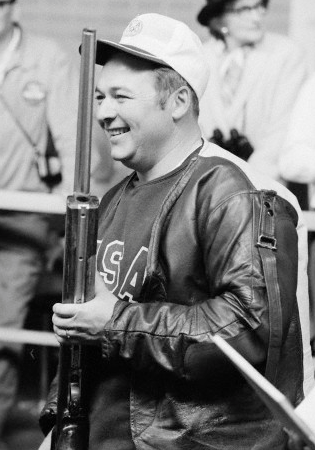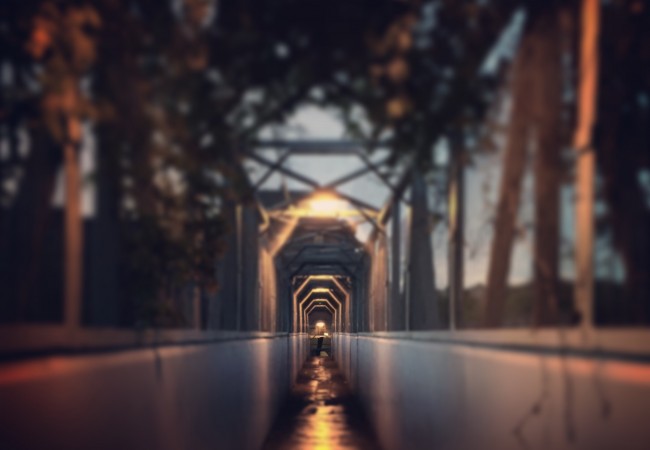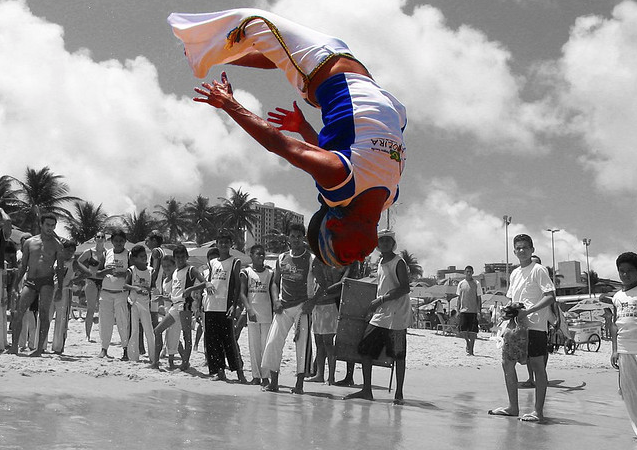What knowledge do you assume you, or others know? What assumptions do you have that may be holding you back? Dr Ann Clarke explains how the assumption of knowledge is the death of curiosity. Test and destroy it.

How to shoot a rifle accurately: Lones Wigger Olympic shooter shares tips
How to shoot a rifle consistently and accurately
You enjoy a challenge, I know that, but what about extreme precision, Jedi mind control, and David Blaine breathing endurance?
Competitive Rifle Shooting is a niche sport you may just fall in love with.
Lones Wigger, retired Lt. Colonel of the US Army, won two Olympic gold medals in 1964 and 1972, competed in World Championships for 20 years and holds more awards in total than any other shooter in history. In 2008 he gained his place in the Olympic Hall of Fame.
I asked him a simple question:
What makes a good shooter?
His answer was profound:
-
Are you calm when everyone else is manic with panic?
-
Can you swim a length underwater against that overwhelming desire to surface?
-
Can you wait until the last tick of the looming tock?
Wigger’s questions called for a state of mind. I was reminded of the Roman Emperor and Stoic Philosopher Marcus Aurelius’ Meditations, in which he teaches how to concentrate and focus by recognising perceptions:
Like seeing roasted meat and other dishes in front of you and suddenly realising: This is a dead fish. A dead bird. A dead pig. Or that this noble vintage is grape juice, and the purple robes are sheep wool dyed with shellfish blood. Or making love – something rubbing against your penis, a brief seizure and a little cloudy liquid.
Perceptions like that – latching onto things and piercing through them, so we see what they really are. That’s what we need to do all the time – all through our lives when things lay claim to our trust – to lay them bare and see how pointless they are, to strip away the legend that encrusts them.
Beginner’s Guide to Competitive Rife Shooting
Here are the basics (valuable insight to know before you go rifle shooting for the first time):
Competitive rifle shooting takes place either indoors or outdoors. What you shoot, i.e. the rounds, depends upon where you are doing it and also how far away the targets are.
The further away the targets, the larger the rounds.

I shot indoors at 25 yards. We used .22 Longs (pictured #2).
What is small bore vs. full bore?
You will hear the terms small bore and long bore a lot in shooting. What do they mean?
The bore of the gun is the hollow part inside the barrel.
Different guns have different sized bores: large or narrow.
Depending on the bore of your gun, you use either full bore or small bore ammunition.
In international and Olympic shooting, .22 inch calibre (5.6mm bore) is considered small bore, and anything bigger full bore.
As we were shooting .22 Longs, we used The .22 Long Rifle (.22LR).
The .22LR is one of the most popular cartridges in the world. Created in 1887 by J. Stevens Arms & Tool Company, most weapons are chambered for this type of ammunition.
An interesting feature few people know about ammunition is that you can get different velocities (speeds):
- Subsonic
- Standard-velocity
- High-velocity
- Hyper-velocity
Rifles In The UK is a fantastic resource for learning more.
A little golden nugget of information: supersonic bullets break the sound barrier. It’s this whip or crack noise that silencers make.
Subsonic velocities do not have this problem and really are almost silent. They are also more accurate at shorter distances as they do not drop after breaking the sound barrier.
The .22 Long Rifle & Scope

Here is a picture of the .22LR I used. You can see the targets in the back (I don’t know why the picture did the weird pixelated blurring thing).
The .22LR was set up with iron sights. That means no magnification. Human eye only.
You have two sights. A rear sight and a front sight. You look through them both.
Why two sights?
Easiest way to explain is to have you do something: Point somewhere in your room, imagining that your finger is the end of the gun.
Look down your arm as if you’re looking down the butt of a gun, aiming at your target.
Keeping your finger pointed at the same place, move your head to the left or right. Notice how what you see at the end of your finger changes as you move your head.
By having two sights, you lock your vision in place. If they’re not lined up, you’ll quickly know you’re not aiming straight.
The Target
In the picture above, you can see a sheet of targets on the floor next to the gun. There are 10 black circles. The sheet hangs at the end of the range, usually 25 yards away if its indoors.

If you hit bullseye, that’s 10 points. The bullseye is about 10mm or 1cm across. Same size as a 5 pence piece if you’re from the UK.
And remember, it’s 25 yards away and you’re shooting with iron sights – relying on your eyes alone. The slightest waver, sway, or nudge and you’ll shoot way out.
For every ring out you go from the bullseye, you lose a point. 10, 9, 8, 7, 6, 5.
Tips to Shoot Consistently and Accurately
I was shooting at my old University of London Rifle Club. The Captain, Morgan Lee, gave some excellent advice that helped achieve consistent, accurate shooting.
In the target above, you can see the bullet hole. In fact, this isn’t one bullet hole, but 5. We were practicing an exercise of consistency and achieving tight ‘grouping’.
It’s like throwing a dart at a board, and then trying to hit the same dart with your second, third, fourth and fifth throws.
Morgan’s Top 3 Tips For Consistent Shooting
- Shoot at the end of your breathe – Breathe in slowly, breathe out slowly. Pause, shoot.
- Start high, follow the sight down – As you breathe out, notice how the movement in your lungs causes the rifle to drop slightly. It moves vertically down the target. Start with the sights higher and follow the movement.
- Follow through, just as you would in golf – The .22LR has a very, very light trigger. Just as when you play golf, after you’ve hit the ball, continue your swing: follow-through. Pull the trigger and continue to pull after the round has fired. Don’t tap ‘n out.
Tom’s additions:
- Allow yourself a second or third breathe. Take your time. In competitive rifle shooting you have about 45 seconds per shot. That is plenty of time for two or three breathes per shot. If you’re not sure, wait.
- Watch the light, not the darkness. The black targets appear as minuscule dots at the end of the sight. If you stare long enough, the white paper around it starts to blind your eye as if you were were looking at a solar eclipse. Some shooters complain about this and is often a reason for reduced accuracy towards the end of the shoot. Use it as an advantage. If you pay attention to the light around the target, rather than the black dot itself, you can notice whether there is more or less light coming from one side than another. If there’s more seeping through, it’s likely that you’re slightly off centre. You want an equal amount of light from all sides.
- Move your hips, not your arms. Shooters know that when you want to change the aim, you don’t move your arms and just point the gun somewhere else, you move your body around it. Principally through your hips.

Use these tips and tricks to focus your shooting and gain greater accuracy and consistency.
I hope this article to be a useful beginner’s guide and/or reading before you go on your first shoot. I’d love to hear feedback from more experienced and seasoned shooting pros – especially if I’ve made some a faux pas – as well as from you if you’ve used it and found it useful. Let me know in the comments or send me a tweet @tomchurch.


